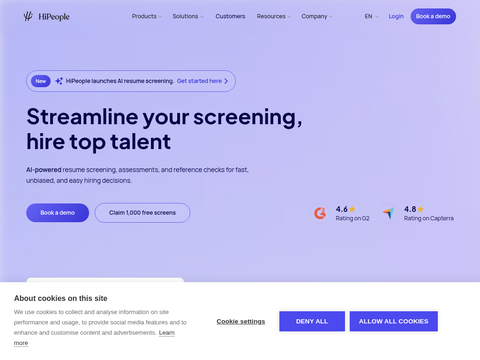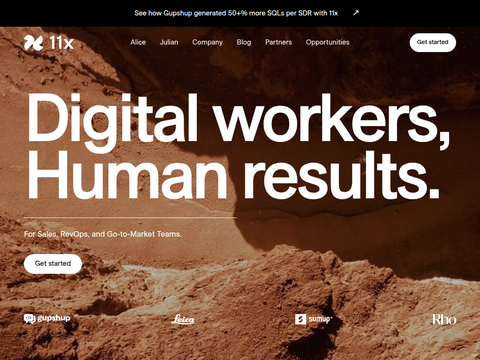Google's DeepMind research division has entered a collaboration with Commonwealth Fusion Systems LLC, a nuclear fusion startup, aiming to apply its advanced artificial intelligence models to help achieve nearly limitless clean energy production.
DeepMind will assist the energy startup in managing, and potentially optimizing, its upcoming Sparc reactor—an essential component in realizing fusion-based electricity generation.
In a blog post, DeepMind's "fusion team" explained that they will use their models to simulate the plasma that will burn inside the Sparc reactor, seeking ways to control it effectively. For this purpose, they developed a software program called Torax, which will be used alongside other AI models to explore optimal approaches to achieving fusion.
This is an ambitious objective, as nuclear fusion has long been considered the holy grail of clean energy. It holds the potential to provide humanity with an almost infinite supply of electricity without carbon emissions, as its primary fuel is water. Therefore, it makes strategic sense for Google to support any initiative that can crack the fusion challenge, especially considering the massive energy demands of its AI data centers. And if Google can also help CFS gain traction as a customer, that would be an added benefit.
DeepMind’s fusion team emphasized that AI could be highly valuable to fusion startups. They have firsthand knowledge of this, as Google has been collaborating with another company, TAE Technologies, to study plasma properties for nearly a decade.
CFS faces the challenge of maintaining plasma at sufficiently high temperatures for energy production to begin—a difficult task. The plasma must remain at extremely high temperatures for extended periods, which is not easily achievable.
Unlike nuclear fission reactions, which are self-sustaining once initiated, fusion reactions only continue under the conditions found within stars. Stars provide the gravitational force and mass needed to sustain fusion indefinitely. However, on Earth, without that gravitational pull, plasmas tend to disperse, causing the reaction to extinguish.
With its Sparc reactor, CFS plans to use powerful magnets instead of stellar gravity to stabilize the plasma and maintain a continuous fusion reaction to generate a steady energy output. However, these magnets require extremely fine-tuned balancing operations, necessitating the development of specialized control software to monitor the plasma and adjust the magnets in response to its constantly changing state.
Cross-sectional visualization of SPARC. Left: Plasma shown in magenta. Right: An example of a plasma pulse simulated in TORAX, illustrating changes in plasma pressure. Far right: We demonstrate how adjustments to control commands affect plasma performance, leading to different plasma pulses.
The challenge lies in the fact that CFS must make millions of tiny adjustments per second—something no human can keep up with. However, AI may be able to step in and perform these adjustments efficiently. In recent years, AI has already driven significant progress in the nuclear fusion industry, and DeepMind believes it is well-suited to solve the problem of plasma control.
Holger Mueller, an analyst at Constellation Research, told SiliconANGLE that this represents a highly intriguing use case for AI that could have profound implications for humanity. “AI is transforming everything—some of these changes are already visible, while others will be more subtle, only becoming apparent later, such as if it successfully enables plasma control and delivers unlimited energy,” the analyst said.
If DeepMind and CFS succeed in this endeavor, it would be a promising sign for the future of AI itself, as there may not be enough global energy to support all the use cases envisioned for this technology, Mueller added. “AI needs more energy to support more AI, and this is a great example of how it can help turn innovative new technologies into reality,” he said.
CFS has announced that the Sparc reactor is expected to be completed sometime next year. Once operational, the company believes it will become the world’s first fusion device capable of generating more energy than it consumes. In other words, it aims to be the first reactor to produce a net energy surplus, which, if successful, would prove that fusion-based electricity is an achievable goal.
According to DeepMind, the plan involves integrating Torax with reinforcement learning and evolutionary search models to discover the most efficient and sustainable methods for achieving energy gain. The team will also work on designing AI systems capable of controlling the reactor itself.
Google has a vested interest in CFS’s success—not only because it could gain access to a major source of extremely low-cost energy, but also because it is one of the startup’s largest financial backers, having participated in its $863 million Series B2 funding round alongside Nvidia.
As part of the agreement, Google has committed to purchasing 200 megawatts of energy from CFS, if and when the company successfully brings its first commercial power plant online.








